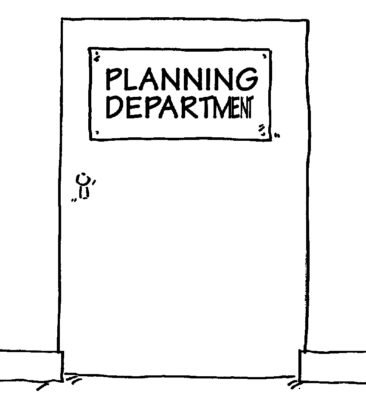#9: Of Chief Pencil Sharpeners and Senior Meeting Conveners

A study about the economic situation of the design profession in the US listed six hierarchies for the positions in an average design firm: owner/partner/principal; creative/design director; art director; senior designer; designer; junior designer. This reasonable list attracted a lot of attention online, with large agencies submitting their lists of up to 18 levels of titles in the design department alone – from Junior Designer through Copywriter and Media Designer to Chief Creative Officer. Not only does this take on inflationary proportions, rendering them increasingly meaningless, but there is also a contradiction in the terminology: Some of the titles denote where someone is placed within the ranks of their company, while others explain what they do there. Titles, roles and job descriptions are all confused. As I learnt from my mother early on, unprecise language indicates unclear thinking.
What, then, makes an agency use such confused language, which they would never tolerate in a client briefing? Their employee’s vanity? And what of designers who have progressed to Design Director after a few years, only to have entered the end of the career street? And if you want to name a dozen hierarchies, you need three times that many employees. Which is why small studios love to fake it by giving an impressive title to every intern (how about Research Assistant?), while the cleaner is upgraded to Vice President of Recycling Operations. And even in Germany, those titles have to be in English, the more to impress gullible clients with. Unfortunately, the Chief Design Officer sounds very much like a military rank in German. The people who are most impressed by this sort of language tend to be the ones who cannot really speak it.
Apart from designer vanity, another reason quoted for titlemania is often the fact that clients would rather call a Design Director than a lowly designer. The director gets paid for taking the call and then relays the message to the lower levels who do the actual work. In the real world, however, teams are neither run nor dominated by the people with the top title, but by those who command the highest respect from their peers.
Unfortunately, the soundest teams often tend to take on new colleagues only if their competence is below the group’s average. Over time, everybody in a small team will have risen to Senior Designer level at least, but at the expense of design quality. The desire to keep the status quo tends to be stronger than that of taking risks. Designers, too, fall victim to the Peter* Principle: Employees within an organization will advance to their highest level of competence and then be promoted to and remain at a level at which they are incompetent.
* After Laurence Johnston Peter (1919 – 1990).